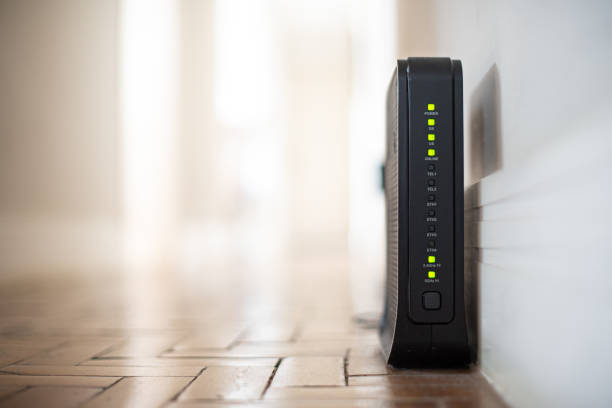Choosing the Best Internet Service Provider: Your Complete Guide to Speed, Reliability, and Value
In today's digital age, a reliable internet connection is indispensable for everything from streaming entertainment to working from home. Whether you're a new resident or simply looking to upgrade your current plan, choosing the right internet service provider is crucial. This guide delves into the various options and explores the fastest, most reliable, and budget-friendly internet plans available in the city.

Selecting an internet service provider is a significant decision that impacts daily life, from remote work and streaming entertainment to online education and smart home functionality. The market offers various technologies, speed tiers, and pricing structures, making it essential to understand what each provider offers and how different options align with your specific requirements.
Understanding ISP Choices in Today’s Market
Internet service providers deliver connectivity through several technologies, each with distinct characteristics. Cable internet uses coaxial cables originally designed for television, offering widespread availability and speeds typically ranging from 100 Mbps to 1 Gbps. Fiber-optic internet transmits data through light signals in glass fibers, providing the fastest speeds available—often up to 2 Gbps or higher—with symmetrical upload and download capabilities. DSL (Digital Subscriber Line) operates over telephone lines, delivering moderate speeds suitable for basic browsing and streaming. Fixed wireless and satellite options serve rural areas where wired infrastructure is limited, though they may experience higher latency and weather-related disruptions.
When evaluating ISP choices, consider availability in your area first, as not all technologies reach every location. Check coverage maps and contact providers directly to confirm service at your address. Assess your household’s internet usage patterns: casual browsing and email require less bandwidth than 4K streaming, online gaming, or video conferencing. Multiple connected devices increase bandwidth demands, so factor in smartphones, tablets, smart TVs, and IoT devices when determining your speed requirements.
Exploring Fast Internet Options for Different Needs
Speed requirements vary significantly based on usage. Basic activities like web browsing and email function adequately with 25 Mbps, while streaming HD video typically requires 5-10 Mbps per device. For 4K streaming, plan for 25 Mbps per stream. Remote work with video conferencing benefits from at least 50 Mbps, particularly when multiple household members work from home simultaneously. Online gaming prioritizes low latency over raw speed, though 50-100 Mbps provides smooth gameplay.
Fiber-optic connections deliver the fastest and most reliable performance, with symmetrical speeds benefiting those who upload large files, stream content, or participate in video calls regularly. Cable internet offers a practical middle ground with widespread availability and competitive speeds, though upload speeds typically lag behind downloads. DSL remains viable for light users in areas without cable or fiber access, while 5G home internet has emerged as a competitive option in select markets, offering speeds comparable to cable without requiring physical line installation.
Finding Budget-Friendly Internet Plans Without Sacrificing Quality
Internet costs vary based on technology, speed tier, and regional competition. Entry-level plans typically start around $30-50 monthly for basic DSL or cable service with speeds of 25-100 Mbps. Mid-tier cable or fiber plans offering 200-500 Mbps generally range from $50-80 monthly. Gigabit fiber services usually cost $70-120 monthly, depending on the provider and market. Many providers charge equipment rental fees of $10-15 monthly for modems and routers, though purchasing your own equipment eliminates this recurring cost.
Budget-conscious consumers should compare promotional rates against standard pricing, as introductory offers often expire after 12-24 months, resulting in significant price increases. Contract terms vary: some providers require annual commitments with early termination fees, while others offer month-to-month flexibility at slightly higher rates. Data caps affect some plans, particularly cable and satellite services, with overage charges applying when monthly limits are exceeded. Unlimited data plans typically cost $10-30 more monthly but eliminate overage concerns for heavy users.
| Provider Type | Technology | Speed Range | Typical Monthly Cost |
|---|---|---|---|
| Cable ISP | Coaxial Cable | 100-1000 Mbps | $50-$90 |
| Fiber ISP | Fiber-Optic | 300-2000 Mbps | $60-$120 |
| DSL Provider | Phone Line | 10-100 Mbps | $30-$60 |
| Fixed Wireless | Radio Signals | 25-100 Mbps | $40-$80 |
| Satellite | Satellite | 25-150 Mbps | $60-$150 |
Prices, rates, or cost estimates mentioned in this article are based on the latest available information but may change over time. Independent research is advised before making financial decisions.
Broadband Technologies Explained: What Powers Your Connection
Broadband encompasses any high-speed internet connection faster than dial-up. Cable broadband shares bandwidth among neighborhood users, potentially causing slowdowns during peak evening hours when many subscribers stream video simultaneously. Fiber-optic technology avoids this congestion by providing dedicated bandwidth to each subscriber, maintaining consistent speeds regardless of neighborhood usage patterns.
DSL performance degrades with distance from the provider’s central office, with speeds decreasing significantly beyond three miles. This distance sensitivity makes DSL unsuitable for many rural locations. Fixed wireless internet uses radio towers to transmit signals to receivers installed at subscriber locations, requiring clear line-of-sight between the tower and receiver. Satellite internet serves the most remote areas but suffers from high latency (500-700 milliseconds) due to the distance signals travel to orbiting satellites, making real-time applications like video calls and gaming challenging.
Picking the Right ISP: Key Factors Beyond Speed and Price
Reliability and customer service significantly impact satisfaction with your internet provider. Research uptime statistics and outage frequency in your area by checking local forums and review sites. Customer service responsiveness matters when technical issues arise, so investigate provider reputations through consumer advocacy organizations and online reviews.
Contract flexibility allows you to switch providers if service proves unsatisfactory. Month-to-month plans cost slightly more but avoid early termination fees. Installation processes vary: some providers offer self-installation kits, while others require professional installation at additional cost. Equipment quality affects performance, so research whether the provider supplies current-generation modems and routers or if purchasing your own equipment makes sense.
Consider future needs when selecting a plan. Households adding members, starting remote work arrangements, or increasing device counts benefit from choosing a higher speed tier initially rather than upgrading later. Bundle opportunities combining internet with phone or streaming services sometimes reduce overall costs, though carefully compare bundle pricing against standalone services to ensure genuine savings.
Making Your Final Decision
Selecting an internet service provider requires balancing speed, reliability, cost, and availability. Begin by identifying which technologies serve your location, then assess your bandwidth needs based on household size and usage patterns. Compare pricing beyond promotional rates to understand long-term costs, and research provider reliability and customer service reputations. Consider contract terms, data caps, and equipment costs when calculating total expenses. By thoroughly evaluating these factors, you can choose a provider that delivers dependable connectivity at a fair price, supporting your digital lifestyle without unnecessary complications or expenses.




